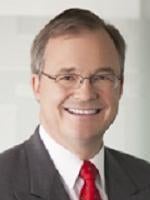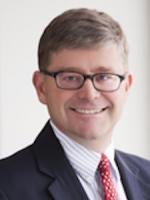The reformed Renewable Energy Sources Act will create expanded market opportunities across the renewable energy sector and new investment opportunities in generation projects and smart grid operational technologies.
For many years, Germany has been a global trailblazer in promoting renewables to replace most fossil-fueled energy production. Germany’s Renewable Energy Sources Act (EEG), enacted in 2000 and amended in 2014, regulates the promotion of renewables. As a result of the EEG, in 2015, 32.5% of Germany's electricity was produced from renewable sources.
A recent change to the EEG, approved in draft form by the Cabinet of Germany on June 8, will open new opportunities in Germany for independent energy producers, service providers (some of which are from the United States), and investors—solidifying the EEG once more as a model for other countries seeking to promote the use of sustainable energy sources and reduce reliance on fossil fuels.
What Does the EEG Cover?
The EEG promotes the development of a sustainable energy supply that conserves fossil energy resources and advances new technologies for the generation of electricity from renewable energy sources (primarily wind, solar, biomass, hydroelectric, and geothermal energy). The EEG aims, in a steady and cost-efficient manner, to increase the share of electricity generated from renewable energy sources to at least 80% of gross electricity consumption by 2050. To this end, the goal is to have renewables account for 40–45% of all energy production in Germany by 2025 and 55–60% by 2035.
The existing elements of the EEG include the following:
-
Interconnection of Renewable Facilities. Grid system operators across all voltage levels must interconnect, purchase, transmit, and distribute all electricity from renewables or from mine gas.
-
Direct Selling to Third Parties. Almost all electricity from renewable energy sources and from mine gas is sold directly by generators to marketers and consumers via the electricity exchange or over-the-counter trading, and is eligible for a market adder paid by the grid system operator. Generators are entitled to provide the electricity to grid system operators (instead of specific parties) and receive feed-in tariffs only under exceptional circumstances.
-
Market Adders and Feed-In Tariffs Decrease Over Time. The fixed financial subsidy constantly decreases to exert cost pressure on energy generators and technology manufacturers.
-
Financing by Surcharges, Not by Taxes. Costs of the EEG system are borne by electricity consumers via the so-called “EEG Surcharge” added to their electricity bills.
-
Development Corridors that Increase Over Time. The EEG establishes so-called “development corridors” with specified maximum capacities across the system for each type of eligible renewable category, with additional amounts authorized each year. For instance, the development corridor for onshore wind energy installations is 2,500 MW per year.
The new elements of the EEG under the reform will include the following:
-
Expanded Wind Development Corridor. The reform increases the development corridors for some renewable categories of the EEG. In particular, the reform provides for an increase in the installation cap for new onshore wind energy installations from 2,500 MW to 2,800 MW per year (an annual net increase from approximately 900 to 1,000 wind turbines).
-
New Auction System. Driven by EU law, which requires a market-based approach for developing renewable energy resources, the changes to the EEG introduce an auction system (on a phased basis) to determine which generators get financial support and the amount of that market premium. Installations under 1 MW are excluded and will continue to be reimbursed according to the current system (i.e., eligible for incentive funding without having to go through the newly implemented auction system).
The goal is that 80% of the electricity produced from new renewable energy projects will be subject to auctions scheduled to begin in 2017. The auctions will be carried out nationwide by Bundesnetzagentur (BNetzA), which will determine the maximum bid price in advance to the auction. The applicant with the lowest bid will win (referred to as a “reverse auction”).
The envisaged auction system has three aims:
1. Comply with the development corridors of the current EEG and control the development of renewables. Although 3–4 auctions are envisioned for each covered category (solar, onshore wind, and offshore wind), there will only be as many auctions as necessary to develop generation in the amounts set for the development corridors.
2. Increase competition and thereby decrease costs (cost efficiency).
3. Preserve the diversity of generators and provide a fair chance to all actors.
The new auction system and the development corridors of the reform—especially the increased cap for onshore wind installations—have been criticized. Critics claim that the development corridor for onshore wind installation is still too small with respect to the ongoing development in this renewable category and that small businesses could be forced to step out of the business due to the auction system.
Furthermore, the German government and states recently agreed on a division of Germany into two onshore wind energy zones. Most of the wind energy is to be produced in zone 1, whereas in zone 2 (which consists of the northwest states), the development of new wind energy installations is to be reduced by approximately one third. This division could lead to different energy prices in the two geographic zones.
Next Steps and Opportunities for Investors
Following the Cabinet’s vote to approve the reform on June 8, the German Federal Parliament must vote on it, and the EU Commission must be notified. If approved, the reform will presumably be implemented by early 2017.
Once in effect, the reformed EEG will create expanded market opportunities across the renewable energy sector. The development corridors, and especially the raised cap for onshore wind, will allow for new investment opportunities in generation projects as well as smart grid operational technologies. The nascent auction system will further call for advisors on auction procedures and sophisticated electricity market analysis.





 />i
/>i

